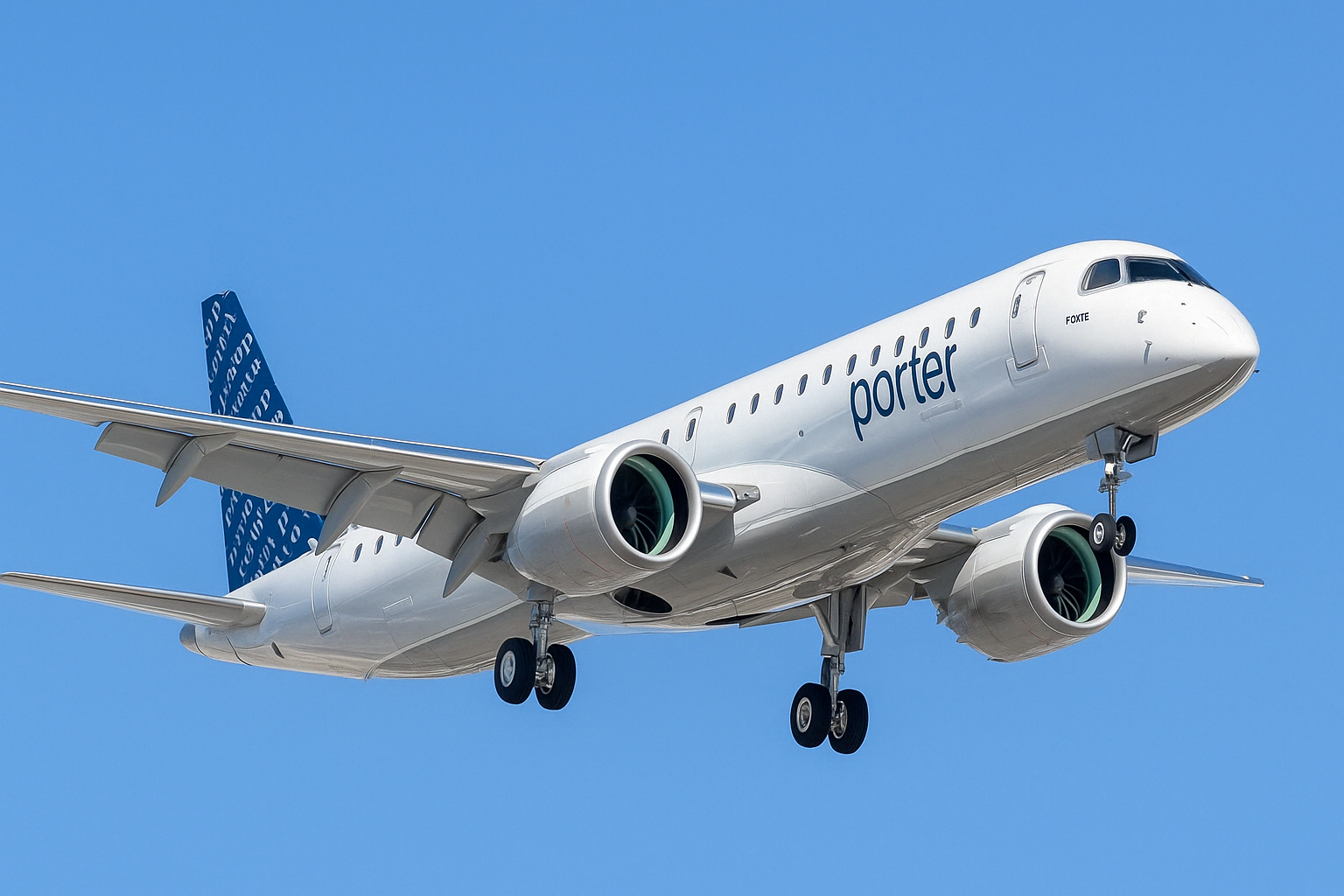Porter Targets East Coast Travel With New Toronto–Moncton Route

Porter Airlines is taking another step eastward. Starting June 25, 2025, it’ll launch a seasonal route between Toronto Pearson (YYZ) and Moncton (YQM), running five times a week. That frequency drops to four weekly flights after September 1, with the final leg of the season wrapping up on September 29.
Flight PD213 leaves Toronto at 6:40 a.m. and arrives in Moncton around 9:40. The return trip, PD214, departs at 10:35 a.m., touching down in Toronto just before noon. It’s not a huge announcement, but it’s a meaningful one — especially for travelers heading toward Canada’s quieter coastal scenes. The route will be flown using Porter’s Embraer E195-E2.
Why Moncton, and Why Now?
Moncton might not be front of mind when you think Canadian air travel, but it holds its own. Tucked in southeastern New Brunswick, it’s a solid gateway to the Maritimes. Think Prince Edward Island, Bay of Fundy, or the Acadian coast — it’s all within reach.
Porter’s timing isn’t random either. The summer months bring tourism to the Maritimes, and for Ontarians itching to escape city life, this is a softer, greener alternative. It’s a bit of strategy and a bit of common sense: go where the people want to be — when they want to be there.
Porter’s Move at Pearson
For years, Porter and Billy Bishop went hand in hand. But lately, that picture’s changing. Pearson’s been playing a bigger role in the airline’s expansion, and this Moncton service is one more nudge in that direction.
Why Pearson? Flexibility, mostly. The ability to use larger aircraft, tap into more connecting flights, and reach destinations that the island airport simply can’t handle. It’s not that Porter’s abandoning Billy Bishop — far from it — but it’s clearly hedging its bets.
A Jet That Fits the Job
The Embraer E195-E2 isn’t flashy, but it’s smart. It flies farther, burns less fuel, and runs quieter than older jets. The cabin? All 2×2 seating — no middle seats, ever. For this kind of mid-range seasonal route, it’s just about perfect.
More importantly, it lets Porter dip into markets like Moncton without needing massive volumes to turn a profit. If things work out, they scale. If not, they adjust. That kind of flexibility matters — especially in regional Canadian aviation, where demand can be spiky.

Test Flight or Long-Term Play?
So is this a one-summer fling, or the start of something bigger? Too early to say. But this isn’t just a symbolic route. Porter’s betting there’s enough interest — and enough missed connections in the current network — to make it stick.
If it works, maybe we see more Atlantic Canada links. If not, it fades quietly with the season. Either way, it’s another notch in Porter’s slow, deliberate growth outside of its original footprint.
Right now, it gives people one more way to get to the Maritimes — direct, efficient, and without the detours. That alone makes it worth watching.
Comments